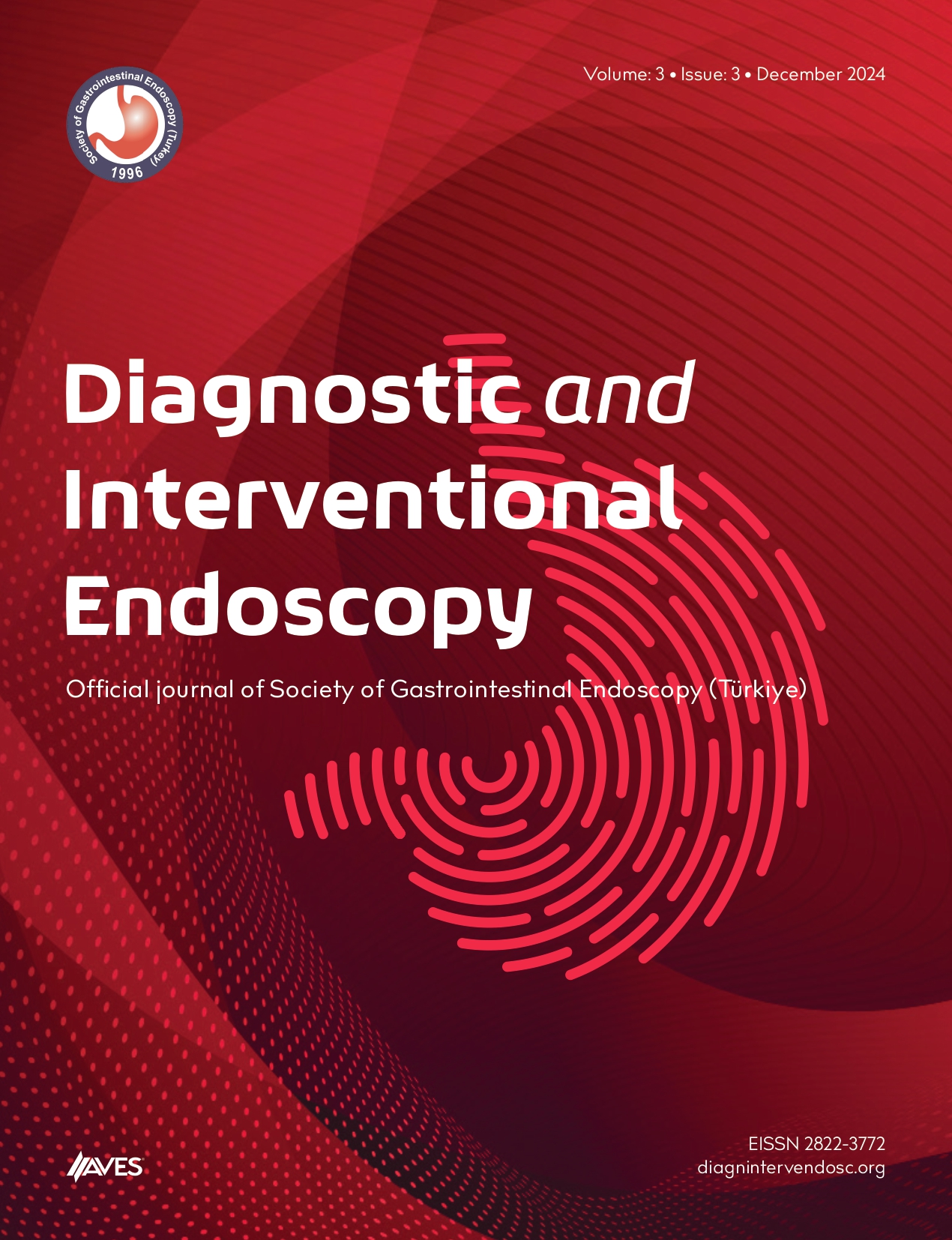Objective: Spontaneous migration of plastic stents placed in the pancreatic duct toward the duodenal lumen rarely occurs. However, removal of the plastic stent that has migrated to the proximal pancreatic duct is also a condition that requires treatment. Removing a migrated pancreatic stent under cholangioscopy has now become a more reliable method than traditional methods.
Methods: The cholangioscope, advanced through the duodenoscope, is placed into the bile ducts and pancreatic duct. With this method, direct visualization of the ducts is provided. After the migrated stent is seen in the pancreatic duct, it can be successfully extracted outside with the help of forceps advanced in the working channel of the cholangioscope.
Results: A 33-year-old female patient was admitted to an external medical center with a complaint of right upper quadrant abdominal pain. The abdominal computed tomography (CT) evaluation revealed a stone in the common bile duct. She was referred to our hospital for endoscopic retrograde chola ngiopancreatography (ERCP) procedure and stone extraction. During the ERCP procedure, the pancreatic duct was cannulated once, so a plastic stent was placed in the pancreatic duct for post-ERCP pancreatitis prophylaxis. The patient experienced abdominal pain 2 days after the ERCP procedure. Abdominal CT examination revealed that the plastic stent in the pancreatic duct had migrated toward the proximal pancreatic duct. The pancreatic duct was evaluated with the SpyGlass D2® cholangioscope. During evaluation with a cholangioscope, it was observed that the plastic stent curled onto itself at the head of the pancreas and migrated to the proximal pancreas. The migrated stent was captured and removed by SpyGlass® forceps, and the procedure was completed without complications.
Conclusion: As a result, cholangioscopy-guided stent extraction stands out as an effective and safe method in the removal of stents migrated to the bile or pancreatic duct, which provides the advantage of direct observation in order to experience fewer complications and shorten the procedure time. This procedure allows patients to receive treatment in a single session. Its importance will become more evident in the future as the use of cholangioscope increases.
Cite this article as: Duman AE, Dönmez E. Retrieval of proximally migrated and bended pancreatic stent by using a new-generation cholangioscope. Diagn Interv Endosc. 2024;3(1):20.

.png)


.png)